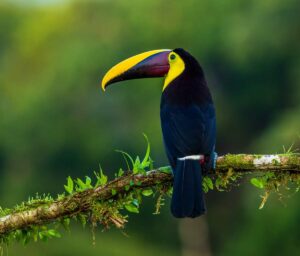Jim Corbett National Park is a renowned national park located in the state of Uttarakhand, India. it is known for its abundant biodiversity, varied flora, fauna, and for being an important tiger conservation reserve. the park was established in 1936 as Hailey National Park and later renamed Jim Corbett National Park in honor of Jim Corbett. He was British-Indian hunter turned conservationist, author, and photographer. Who played a key role in the establishment of the park and conservation efforts in the region.
[lwptoc min=”21″ depth=”6″ hierarchical=”1″ title=”Table of Contents” labelShow=”show” labelHide=”hide” hideItems=”0″ smoothScroll=”1″]
Activities
Jim Corbett Park offers a range of activities for visitors, including wildlife safaris, bird watching, nature walks, and camping. Safari options include jeep safaris, elephant safaris, and canter safaris, which provide opportunities to spot the park’s diverse wildlife. Jim Corbett National Park is in the Nainital district of Uttarakhand. It spans 520 square kilometers and it is located in the Himalayan foothills, covering the Shivalik range and Terai region.
How to reach Jim Corbett National Park
To reach the one of the oldest and most famous Corbett Park, below are the Options
By Road
Jim Corbett National Park is well-connected by road to major cities in Uttarakhand and nearby states. It is situated very close at just 245 km from Delhi, takes 5 to 6hrs hours only via Hapur and Moradabad.
By Air
The nearest airport to Corbett National Park is Pantnagar Airport, which is approximately 83 kilometers away. From Pantnagar Airport, you can hire a taxi or take a bus to reach the national park.
By Train
The nearest railway station to Corbett National Park is Ramnagar Railway Station, which is approximately 12 kilometers away. Major Indian cities are easily accessible from Ramnagar Railway Station. From the railway station, you can hire a taxi or take a bus to reach the national park. Ticket price is around 500/- of 3A.
Train timings are as per below:-
Ranikhet Express (15013) from Delhi Cantt Railway Station (DEC). It takes around 8 hrs and departure time is 8pm and arrival time is 4:50 am to Ramnagar Railway Station (RMR). Corbett park Link (25014) is the best train to return to Delhi from Ramnagar. It Departs at 10:15PM from Ramnagar Railway Station (RMR) and will reach Delhi Cantt railway ststaion (DEC) by 5.03AM. You must check updated and current status before booking any ticket as many others options are available on IRCTC.
By Air + Road
If you are coming from other states of India or abroad, you can fly to Delhi Indira Gandhi International Airport. From Delhi One option is to take a flight to Pantnagar Airport. Another options are to take a train or bus to Ramnagar Railway Station. Then continue your journey by taxi or bus to reach the National Park.
Flora and Fauna of Jim Corbett
The Park is home to a wide range of plant and animal species. It has dense forests of Sal, Sheesham, Haldu, and other trees, which provide habitat to a variety of wildlife. The park is famous for its population of Bengal tigers, along with other large mammals such as Asian elephants, Indian leopards, sloth bears, and spotted deer. It is also a birdwatcher’s paradise, with over 600 species of birds, including the endangered great Indian bustard, found in the park.
Bengal Tiger

Jim Corbett National Park is famous for its Bengal tiger population. It is one of the best places in India to spot these majestic big cats in their natural habitat. It is known for its successful tiger conservation efforts, and tiger sightings are a major attraction for visitors. Jim Corbett National Park Now Has 252 Tigers — Highest In the WorldIt is home to more than 585 species of birds, 37 species of dragonflies, 33 species of reptiles, 7 species of amphibians and 7 species of fishes etc.
Asian Elephant

Jim Corbett National Park is home to a significant population of Asian elephants. These gentle giants can often be seen roaming the park’s grasslands and forests in search of food and water. Park has around 700 elephants.
Indian Leopard

The elusive Indian leopard is another big cat species found in Jim Corbett National Park. Although leopards are known for their secretive nature, lucky visitors might catch a glimpse of these spotted felines while exploring the park.
Sloth Bear

Jim Corbett National Park is also home to the sloth bear, a shaggy-coated, insect-eating mammal and known for their unique appearance and behavior.
Indian Python

The Indian python is one of the largest snakes present in Jim Corbett National Park.
Gharial

The Jim Corbett Park’s waters are home to the Gharial, also known as the Indian Gavial, a critically endangered species of crocodilian mammal.
Avifauna

Jim Corbett National Park is a paradise for birdwatchers, with over 600 species of birds recorded in the park. Some of the notable bird species found in the park include the Great Hornbill, Crested Serpent Eagle, Himalayan Rubythroat, and Pallas’s Fish Eagle, among others.
Apart from these, the park also hosts several species of deer, such as Spotted Deer (Chital), Sambar Deer, Hog Deer, and Barking Deer, as well as smaller mammals like Wild Boar, Langur, Rhesus Macaque.
The park has several entry gates and safari timings that visitors need to be aware of. Below is the information:-
Entry Gates
Dhikala Gate – Dhikala is one of the main entry gates of Jim Corbett National Park and is located in the core area of the park. Dhikala is a well-known location for wildlife sightings, including tigers, elephants, and crocodiles. It additionally offers all the panoramic view of the park area.
Bijrani Gate – This is one of the most popular entry gates of Jim Corbett National Park and is located near Ramnagar. In Bijrani, it’s common to see tigers, elephants, and deer, among other animals.
Jhirna Gate – Jhirna is another entry gate of Jim Corbett National Park and is also located near Ramnagar. It is accessible throughout the year and renowned for the variety of birds and greenery it supports.
Durgadevi Gate – Durgadevi is a lesser-known entry gate of Corbett Park and is located in the northeastern part of the park. It is known for its tranquil surroundings and is a good spot for birdwatching.
Safari Timings
The safari timings in Jim Corbett National Park vary depending on the season. The park remains open from November to June, and the timings for safaris are as follows:-
Morning Safari – The morning safari usually starts around 6:00 am and lasts until 9:30 am. This is the best time for wildlife sightings as animals are generally active during the early hours of the day.
Afternoon Safari – The afternoon safari starts around 2:30 pm and lasts until 5:30 pm. This is another good time for wildlife sightings, especially during the hot summer months when animals tend to come out in search of water. Please note that the timings may vary slightly depending on the actual sunrise and sunset times, which change throughout the year. It is always best to check the official website or contact the park authorities for the most up-to-date and accurate information on entry gates and safari timings.
Conservation
Jim Corbett National Park has been a pioneer in tiger conservation efforts in India. It is a designated tiger reserve under Project Tiger, a national conservation program aimed at protecting the endangered Bengal tiger. The park has also implemented various community-based conservation initiatives, involving local communities in the conservation efforts and providing them with livelihood opportunities through eco-tourism and sustainable resource management.
Best time to visit Jim Corbett National Park Uttarakhand
The park is open to visitors from November to June, with the best time to visit being February to May. It is important to follow the park’s rules and regulations, such as maintaining silence, not littering, and respecting the wildlife and their habitats. It is also advisable to take the help of authorized guides and naturalists to make the most of your visit while ensuring the safety of both visitors and wildlife.
Conclusion
Jim Corbett National Park is a renowned wildlife destination in India, known for its rich biodiversity, tiger conservation efforts, and unique experiences for visitors. It is a haven for nature lovers, wildlife enthusiasts, and adventure seekers, offering a chance to witness the beauty of the Himalayan region and its magnificent wildlife up close. You can contact us for safari bookings.







